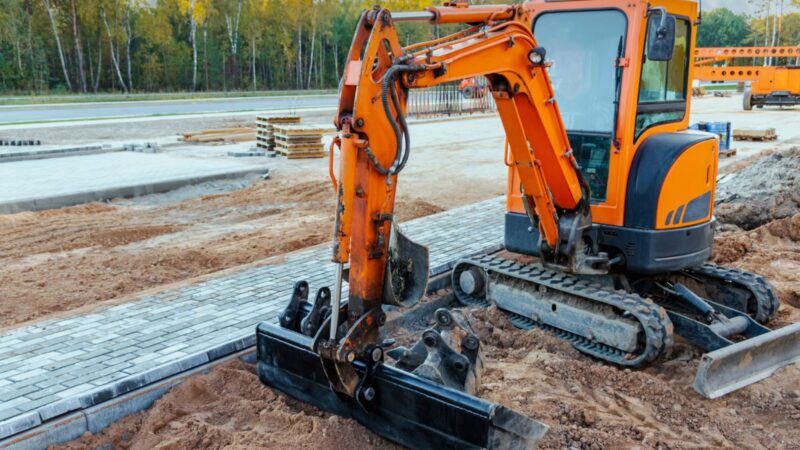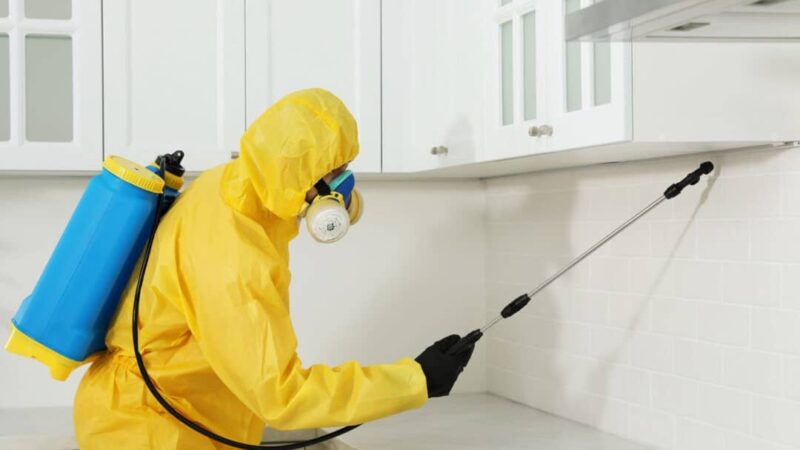Health Implications of Asbestos Exposure
When it comes to home renovations, one hidden danger that often gets overlooked is asbestos. This naturally occurring mineral was widely used in building materials due to its heat resistance and strength. However, disturbing asbestos-containing materials during renovations can release tiny fibers into the air. Inhaling these fibers poses significant health risks. Over time, they can cause serious illnesses, including asbestosis, lung cancer, and mesothelioma, a particularly aggressive cancer affecting the lining of the lungs. The risk is not immediate; symptoms can take decades to appear, making it a silent threat.
Common Sources of Asbestos in Homes
Before the 1980s, asbestos was a common component in many household materials. Homeowners should be aware of potential asbestos lurking in:
- Insulation, especially around pipes and boilers
- Vinyl floor tiles and adhesive
- Roofing shingles and siding
- Textured paints and patching compounds used on walls and ceilings
Identifying these sources is crucial for safe renovation practices. If your home was built before 1980, there’s a higher chance it contains asbestos.
Legal Regulations on Asbestos Use
The use of asbestos in new construction has been significantly restricted due to its health risks. In the United States, regulations have banned many asbestos-containing products, but some materials may still legally contain it. Homeowners should be aware of these regulations to avoid potential legal issues during renovations. It’s advisable to consult with professionals who understand the current laws and can safely manage asbestos removal if necessary. Understanding these legal frameworks helps protect not only your health but also ensures compliance with safety standards during home renovations.
Identifying Asbestos in Your Home
Signs of Asbestos Presence
When it comes to spotting asbestos in your home, it’s not as straightforward as one might think. Older homes, particularly those built before the 1980s, are more likely to contain asbestos. This mineral was commonly used in building materials due to its durability and heat resistance. Some places where asbestos might be hiding include insulation around HVAC systems, floor tiles, and even in textured paint. If you’re renovating, be cautious. If you knock down a wall and see a white, fibrous material, it might be asbestos. However, it’s almost impossible to identify asbestos just by looking at it, so it’s best to err on the side of caution.
Professional Asbestos Inspection
For those who suspect the presence of asbestos, hiring a professional is the safest route. These experts are trained to identify and assess the risk of asbestos in your home. They can conduct thorough inspections and take samples for laboratory testing. Unlike standard home inspectors, asbestos professionals have the necessary tools and expertise to determine if asbestos is present and whether it poses a risk. If you’re planning a renovation, it’s wise to have an inspection done beforehand to avoid any surprises.
DIY Asbestos Testing: Pros and Cons
Some homeowners might consider testing for asbestos themselves. While DIY kits are available, they come with significant risks. Here are some points to consider:
- Pros:
- Cons:
Given these factors, many experts recommend leaving asbestos testing to the professionals to ensure safety and accuracy. If you’re unsure about the presence of asbestos, it’s always better to consult with an expert rather than risking potential exposure.
Preparing for a Safe Renovation
Initial Safety Assessments
Before diving into any renovation project, it’s important to conduct a thorough safety assessment. This involves checking for potential hazards, including asbestos. Asbestos is a dangerous material that can pose serious health risks if disturbed. Therefore, it’s crucial to identify its presence before any work begins. Homeowners should consider hiring a professional to conduct an asbestos inspection, ensuring that any risks are identified early. This step not only protects the health of those living in the home but also the workers involved in the renovation.
Creating a Renovation Plan
Once the initial safety assessments are complete, the next step is to create a detailed renovation plan. This plan should outline all the work to be done, including timelines and safety measures. It’s essential to include strategies for minimizing dust and debris, which can carry asbestos fibers if present. The plan should also detail the use of protective gear and equipment to safeguard everyone involved.
Securing Necessary Permits
Renovation projects often require various permits, especially when dealing with materials like asbestos. Homeowners must check local regulations to determine what permits are needed for their specific project. Obtaining the necessary permits not only ensures compliance with legal requirements but also provides an added layer of safety. It might be helpful to consult with local authorities or professionals to ensure all necessary documentation is in order before starting the renovation.
During renovations, if asbestos is found, it’s vital to halt all activities immediately and ensure that workers are equipped with the necessary protective gear. Following these steps can significantly reduce the risk of asbestos exposure, making the renovation process safer for everyone involved.
Hiring Professional Asbestos Abatement Services
Choosing a Qualified Contractor
When it comes to handling asbestos, selecting the right professional is crucial. Hiring professional asbestos abatement contractors is essential for safety due to their expertise and use of specialized safety gear, including respiratory protection. These professionals ensure proper handling and removal of asbestos, minimizing health risks associated with exposure. Their training and experience allow them to follow safety protocols effectively, providing peace of mind for property owners.
Here’s how you can choose a qualified contractor:
- Verify Credentials: Ensure the contractor holds the necessary licenses and certifications for asbestos removal in your state.
- Check Experience: Look for contractors with extensive experience and a track record of successful asbestos abatement projects.
- Read Reviews: Discover authentic reviews and ratings for asbestos removal specialists in Seattle, WA here. This resource assists in selecting the most suitable professionals for asbestos removal services.
Understanding Abatement Procedures
Once you’ve chosen a contractor, it’s important to understand the procedures they will follow. A professional abatement service will usually:
- Conduct a thorough inspection to identify asbestos-containing materials.
- Develop a comprehensive plan to safely remove or contain the asbestos.
- Utilize specialized equipment to ensure safe removal, including air filtration devices and protective clothing.
Cost Considerations for Asbestos Removal
The cost of asbestos abatement can vary widely depending on the extent of the contamination and the complexity of the removal process. Some factors influencing the cost include:
- Size of the Area: Larger areas will naturally require more resources and time, increasing the overall cost.
- Accessibility: Hard-to-reach areas may require additional equipment or labor, impacting the price.
- Disposal Fees: Proper disposal of asbestos materials is crucial and often involves specific fees.
Hiring professionals not only ensures safety but also helps in managing these costs effectively. Always obtain multiple quotes and compare them to ensure you’re getting a fair deal.
Implementing Safety Measures During Renovation
Setting Up Containment Areas
Before any renovation work begins, it’s crucial to establish containment areas to prevent asbestos fibers from spreading. Containment is key in minimizing exposure risks. Here’s how to do it:
- Seal off the work area using heavy-duty plastic sheeting and duct tape. This creates a barrier that keeps asbestos fibers contained.
- Ensure that all HVAC systems are turned off to prevent asbestos from circulating through the air ducts.
- Use negative air pressure machines to keep the contaminated air from escaping the sealed area.
Using Personal Protective Equipment
When dealing with asbestos, wearing the right personal protective equipment (PPE) is non-negotiable. PPE acts as a shield against harmful fibers. Essential gear includes:
- A high-quality respirator, specifically designed for asbestos, to prevent inhalation of fibers.
- Disposable coveralls that prevent asbestos fibers from clinging to clothing.
- Protective goggles and gloves to protect eyes and skin from exposure.
Monitoring Air Quality
Keeping track of air quality is vital to ensure that asbestos levels remain safe. Here’s what you should do:
- Use air monitoring devices to regularly check for asbestos fiber levels during the renovation.
- Conduct air tests before, during, and after the project to ensure that the environment is safe.
- Employ approved containment methods to maintain air quality and protect against exposure.
By following these measures, homeowners can significantly reduce the risks associated with asbestos during renovations. Safety should always be the top priority to protect both the workers and the residents.
Handling Asbestos Waste Properly
Safe Disposal Methods
When dealing with asbestos waste, it’s crucial to follow strict disposal methods to prevent any health risks. Asbestos waste must be handled with utmost care. It should be moistened to minimize dust, sealed in two layers of 6-millimeter plastic bags, and placed in an airtight container with a lid for safe disposal. This method ensures that no fibers escape into the air, reducing the risk of exposure. Homeowners should never attempt to dispose of asbestos waste on their own. Instead, they should rely on licensed asbestos abatement professionals who are trained to handle and dispose of asbestos safely.
Legal Requirements for Asbestos Waste
Disposing of asbestos waste isn’t just about safety; it’s about following legal guidelines too. Local and federal laws require specific procedures to be followed when disposing of asbestos. These regulations are in place to protect both the public and the environment. It’s important to consult with local authorities or a professional service to understand these regulations fully. Ignoring these legal requirements can lead to significant fines and health hazards.
Environmental Impact of Improper Disposal
Improper disposal of asbestos can have severe environmental consequences. When asbestos waste isn’t handled correctly, fibers can be released into the air or leach into the soil, posing risks to wildlife and contaminating water sources. This is why it’s crucial to ensure that asbestos waste is disposed of properly by professionals. Proper containment and disposal not only protect human health but also preserve the environment for future generations. Remember, the goal is to prevent any asbestos fibers from becoming airborne or entering the ecosystem.
Post-Renovation Safety Checks
Final Inspection for Asbestos
After completing a renovation, a final inspection is crucial to ensure that no asbestos fibers are lingering in your home. This step involves hiring a certified asbestos inspector who can thoroughly examine the renovated areas. The inspector will check for any remaining asbestos materials and confirm that the abatement was successful. This is not just a formality; it’s a necessary step to safeguard your health and peace of mind.
Ensuring Air Quality Standards
Maintaining good air quality is essential after any renovation, especially when asbestos was involved. It’s advisable to conduct air quality tests to detect any airborne asbestos fibers. These tests can be performed by professionals who use specialized equipment to measure the concentration of asbestos in the air. If the levels are above the acceptable standards, additional cleaning or abatement might be necessary to protect your health.
Long-term Health Monitoring
Once the renovation is complete and the house is deemed safe, it’s wise to keep monitoring your health over time. Asbestos exposure can lead to health issues that may not appear immediately. Monitor for symptoms such as persistent cough, chest pain, or difficulty breathing, and consult a healthcare professional if any of these arise. Regular health check-ups can help detect any asbestos-related conditions early on.
By following these post-renovation safety checks, homeowners can ensure their living environment remains safe and healthy. For those planning demolition or renovation projects, it is vital to conduct a comprehensive inspection as required by asbestos NESHAP regulations.
Educating Homeowners on Asbestos Risks
Community Awareness Programs
Community awareness programs play a vital role in informing homeowners about the dangers of asbestos. These initiatives often include workshops, seminars, and informational sessions that highlight the potential health risks associated with asbestos exposure. It’s crucial for communities to engage in these programs to ensure that residents are well-informed about the steps they can take to minimize exposure. Local governments and health organizations frequently collaborate to provide resources and support, making it easier for homeowners to access the information they need.
Resources for Homeowners
Homeowners need access to reliable resources to understand and manage asbestos risks effectively. These resources may include brochures, online guides, and contact information for local asbestos abatement services. The EPA asbestos site is a valuable resource, offering detailed information on asbestos sources, exposure risks, and health effects. By utilizing such resources, homeowners can make informed decisions about renovations and asbestos management.
Importance of Ongoing Education
Ongoing education is essential for keeping homeowners updated on the latest asbestos-related information and regulations. Regular updates from health departments and environmental agencies help ensure that homeowners remain aware of any changes in safety guidelines or legal requirements. Continual learning and awareness can significantly reduce the risks associated with asbestos exposure, protecting both current and future generations from its harmful effects.
Legal and Insurance Considerations
Understanding Liability Issues
When it comes to asbestos, liability is a big deal. If asbestos is found during a renovation, the homeowner could be held responsible for any exposure risks. This is why it’s crucial to have a clear understanding of liability issues before starting any project. In many cases, hiring a licensed professional to handle asbestos can reduce liability. Homeowners should ensure that their contractors are both qualified and insured to deal with asbestos safely.
Insurance Coverage for Asbestos
Insurance coverage for asbestos can be a tricky subject. Most standard home insurance policies do not cover asbestos removal. It’s essential for homeowners to review their policies and understand what is and isn’t covered. Some policies might offer limited coverage for asbestos-related incidents, but they often require specific endorsements. Homeowners should discuss with their insurance agents about potential coverage options. For more details on this topic, consider exploring asbestos removal costs and how they relate to insurance.
Navigating Legal Claims Related to Asbestos
Legal claims related to asbestos can be quite complex. If you or someone in your home is exposed to asbestos, there might be grounds for a legal claim. This could involve claims against previous homeowners, manufacturers, or contractors who improperly handled asbestos. It’s important to consult with a legal professional who specializes in asbestos-related cases to understand your options. Legal proceedings can be lengthy and require substantial evidence, so gathering documentation early on is advisable.
In summary, understanding the legal and insurance landscape is vital for anyone dealing with asbestos in their home. Proper knowledge and preparation can help mitigate risks and ensure a smoother renovation process.
Innovations in Asbestos Detection and Removal
New Technologies in Asbestos Detection
In recent years, the field of asbestos detection has seen remarkable technological advancements. One of the standout innovations is the use of HEPA filters, which are designed to capture 99.97% of asbestos fibers during removal processes. These filters are crucial in ensuring that the air remains safe for both workers and inhabitants during abatement activities. Another exciting development is the adoption of robotic technologies. These robots are equipped to handle asbestos safely, minimizing human exposure to this hazardous material. Such innovations not only enhance safety but also improve the efficiency of asbestos management.
Advancements in Safe Removal Techniques
The methods used for asbestos removal have also evolved significantly. Traditionally, removal was a labor-intensive process, often posing health risks to those involved. Now, with the integration of advanced machinery and protective gear, the process is much safer. Professionals are now using wet removal techniques to prevent fibers from becoming airborne. Additionally, negative air pressure machines are employed to ensure that any loose fibers are contained effectively.
Future Trends in Asbestos Management
Looking ahead, the future of asbestos management is promising, with ongoing research focused on developing even more effective detection and removal strategies. There’s a growing interest in using AI-driven systems to identify asbestos presence more accurately and swiftly. Furthermore, the industry is exploring eco-friendly disposal methods that reduce environmental impact. As technology continues to advance, the hope is that dealing with asbestos will become less risky and more efficient, ensuring better protection for everyone involved.
Further Reading








